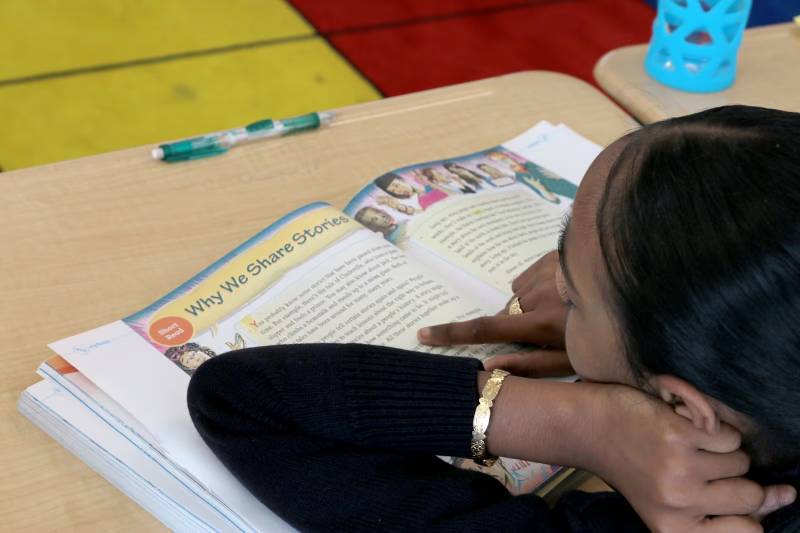It’s also possible that schools targeted more academic support to older children and teens.
“We can see it as a call to action to make sure that we, as an educational community, are prioritizing those early grades,” Huff said. Those are critical years when children learn their letters and numbers and start reading and counting. “These are all the basics for being able to move along that learning trajectory for the rest of your schooling career.”
A slew of recent reports have examined students’ academic progress post-pandemic. Some researchers found that students in third to eighth grade are making larger-than-usual gains, but that most kids are still behind their pre-pandemic peers. Meanwhile, academic gaps between students from low-income backgrounds and their more affluent peers have widened.
The new Curriculum Associates report, which analyzed results from some 4 million students, is unique in that it includes data points for younger children who haven’t yet taken state tests. Researchers looked at how students who entered kindergarten to fourth grade during the 2021-22 school year performed in math and reading over three years, and compared that against kids who started the same grades just prior to the pandemic.
Children who began kindergarten in the fall of 2021, for example, scored close to what kindergartners did prior to the pandemic in reading. But over the last few years, they’ve fallen behind their counterparts. Kids who started first grade in the fall of 2021 have been consistently behind children who started first grade prior to the pandemic in reading.
In math, meanwhile, students who started kindergarten, first grade, and second grade in the fall of 2021 all started off scoring lower than their counterparts did prior to the pandemic. And they’ve consistently made less progress — putting them “significantly behind” their peers.
Younger children made less progress than their pre-pandemic peers regardless of whether they went to schools in cities, suburbs or rural communities. And the students who started off further behind had the most difficulty catching up.
Schools may want to consider changing up their academic interventions to focus more on early elementary schoolers, researchers said. It will be especially important to pinpoint exactly which missing skills kids need to master so they can follow along with lessons in their current grade, Huff added. This year, many of the report’s struggling students will be entering third and fourth grade.
In Charleston County, South Carolina, where younger students are outperforming others in their state, especially in math, the district is using a few strategies that officials think have helped.
The district made improving reading instruction a top priority. Officials purchased a new curriculum to better align with the science of reading, gave teachers extensive literacy skills training, and started providing families more information about their kids’ academic performance.
Crucially, said Buffy Roberts, who oversees assessments for Charleston County schools, the district identified groups of kids who were very behind and what it would take to catch them up over several years. Taking a longer view helped teachers break down a big job and ensured kids who needed a lot of help got more support.
“We really helped people understand that if our students were already behind, making typical growth is great, but it’s not going to cut it,” Roberts said. “It was really thinking very strategically and being very targeted about what a child needs in order to get out of that, I hate to call it a hole, but it is a hole.”
Kalyn Belsha is a senior national education reporter based in Chicago. Contact her at kbelsha@chalkbeat.org.
Chalkbeat is a nonprofit news site covering educational change in public schools.


